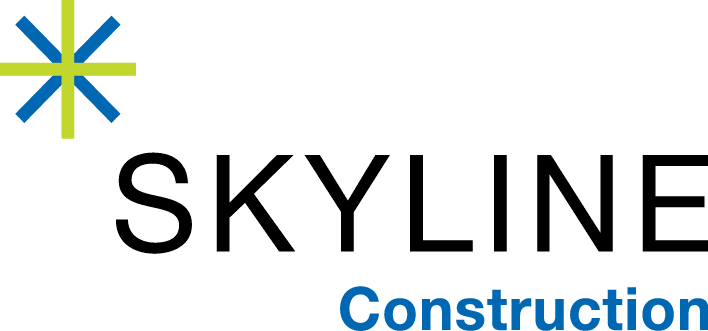Knowledge Sharing
Safe Habits Save Lives: A Culture of Prevention at Skyline Construction
Safety is more than a box we check – it’s built into the foundation of everything we do at Skyline Construction. Our safety philosophy applies to everyone: “Safe Habits Save Lives.”
It’s about consistent, everyday actions that keep our clients, subcontractors and employees safe on the job. Last year, we achieved a significant milestone: zero incidents requiring days away from work across all jobsites. With hundreds of professionals working across our diverse and dynamic construction sites, this achievement is a reflection of our safety culture where everyone is mutually responsible.
In this blog, we are reinforcing the simple behaviors that build and maintain a strong safety culture. In the construction industry, there are four key categories that contribute to the majority of construction-related injuries and fatalities: Falls, Electrical, Caught-in/Between, and Struck-By. Known as OSHA’s “Focus Four,” these hazards demand constant awareness, proper training, and jobsite protocols that leave no room for shortcuts.
1. Falls: The Fastest Risk
Falls remain the leading cause of death in construction – and they can happen faster than many realize. In just one second, a person can fall 16 feet; in two seconds, that distance increases to 64 feet. These accidents are often sudden and severe, making fall protection planning essential on every jobsite.
The Hierarchy of Fall Protection is the industry standard for managing fall risks. It begins with eliminating the hazard whenever possible, followed by implementing passive systems like guardrails, and then using active methods such as personal fall arrest systems when needed.
Particular attention must be paid to scaffolds and aerial lifts, which require thorough inspection, proper assembly, and consistent use of fall arrest systems. Data shows that 57% of fatal falls from under 20 feet involve scaffolds, emphasizing the need for vigilance even at lower heights. Workers should be trained to check for stable footings, overhead obstructions, slab openings, and other environmental factors that can increase fall risk.

2. Electrical: The Invisible Danger
Electrical hazards don’t always look dangerous, but they are often deadly. In fact, non-electrical workers are responsible for 74% of electrical deaths, due to items like unguarded wiring, damaged cords, and improper lockout/tagout procedures. That’s why electrical work demands more intentional planning and strict controls.
Live work should never be performed unless it’s absolutely infeasible to de-energize equipment, and even then, only with appropriate safeguards. Locks and tags are personal, as only the person who installed them can remove them, and permission to bypass this rule should never be given. All electrical rooms are required to be access-controlled, with a mandate that only trained electricians or authorized building engineers are allowed to enter. Invisible or not, electricity is a force we must prepare for, with diligence, and pre-planning.

3. Caught-In/Between: The Silent Squeeze
Caught-in/between incidents can strike suddenly and are often associated with trench collapses, moving equipment, or shifting materials. These incidents typically occur in confined spaces or blind spots, placing workers at risk of being pinned, crushed, or trapped.
Protective systems such as trench shoring, shielding, and sloping are essential in excavation work. Per OSHA, access ladders must be provided within 25 feet in trenches over four feet deep. Clear communication is crucial when working near equipment. Workers must identify pinch points, adhere to lockout/tagout procedures, and never place themselves between moving and fixed objects.
4. Struck-By: The Moving Target
Struck-by hazards remain a leading cause of construction injuries, ranked as the #1 cause of nonfatal injuries and #2 cause of fatalities. These injuries result from flying, falling, swinging, or rolling objects such as tools, vehicles, or materials.
Hard hats save lives, plain and simple. Struck-by prevention begins with environment control, which includes creating safe work zones using MUTCD guidelines: certified flaggers, proper signage, barricades, cones, and communication systems like radios or airhorns. Workers should stay out of the “line of fire,” and avoid working under suspended loads. When operating near vehicles or machinery, ensure back-up alarms are functional and spotters are in place.

Safety Starts with Simplicity: Core Principles That Protect Everyone
More than just preventing OSHA’s Focus Four hazards, Skyline Construction believes that the most effective safety practices are often the simplest. That’s why we promote a set of five core principles that every employee – regardless of their role or experience – can put into practice, whether on the jobsite or not. These habits build a strong safety culture.
- Speak Up – If something feels unsafe, it probably is. We encourage everyone to stop work and raise concerns immediately – no hesitation, no exceptions.
- Plan Ahead – A five-minute pause before any task can prevent serious injury. We take time to assess the work, surroundings, and tools before starting.
- Stay Focused – Distractions lead to accidents. Staying present and attentive ensures we do the job right.
- Use the Right Gear – Proper PPE saves lives. If the right equipment isn’t available or in good condition, work doesn’t proceed until it’s rectified.
- Watch Each Other’s Backs – Safety is a shared responsibility. We look out for one another and speak up when we see someone at risk.
By embedding these principles into our daily routines, the team at Skyline Construction fosters a proactive safety culture; one where every individual has the tools, authority, and mindset to prevent the preventable.
READ NEXT
